Regex Uk Phone Number
Regular expressions, commonly known as regex, are powerful tools used for pattern matching and data validation in software applications. A regex consists of a sequence of characters that defines a search pattern, allowing developers to efficiently find and manipulate text based on specific criteria.
When it comes to validating UK phone numbers, regex plays a crucial role in ensuring the correctness and integrity of the data inputted into software systems. By using regex patterns, developers can easily verify whether a phone number is in the correct format and detect any input errors or inconsistencies.
1. Understanding Regular Expressions (Regex)
a. Definition and purpose of regular expressions
Regular expressions, or regex, are sequences of characters that define a search pattern. They are commonly used in software development to find and manipulate text based on specific criteria. The patterns defined by regex can be simple or complex, allowing for precise text matching and data validation.
b. Usage in pattern matching and data validation
Regex is widely used for pattern matching and data validation in software applications. It enables developers to search, extract, and manipulate text efficiently. With regex, developers can define patterns to match specific strings, validate data formats, and enhance data integrity.
c. Syntax and common symbols used in regex patterns
Regex patterns consist of plain text characters, metacharacters, and quantifiers. Plain text characters match themselves, while metacharacters have special meanings. Common metacharacters include “.”, which matches any single character, and “*”, which matches zero or more occurrences of the previous character. Quantifiers are used to specify the number of occurrences to match, such as “*” for zero or more occurrences and “+” for one or more occurrences.
2. Structure of UK Phone Numbers
a. Overview of the structure of UK phone numbers
UK phone numbers typically consist of a country code, an area code, and a subscriber number. The country code for the UK is “+44”, while the area code varies depending on the location. The subscriber number is the unique number assigned to each individual phone line.
b. Country code, area code, and subscriber number components
The country code for the UK is “+44”. The area code is a three to five-digit code used to identify a specific geographic area within the UK. The subscriber number consists of six to ten digits and represents the unique identifier for an individual phone line.
c. Alternative formats and variations in phone number presentation
Phone numbers in the UK can be presented in various formats, including with or without spaces, parentheses, or hyphens. Additionally, the area code may be enclosed in parentheses or preceded by “0” when dialing within the UK.
3. Validating UK Phone Numbers with Regex
a. Importance of validating phone numbers in software applications
Validating phone numbers is crucial in software applications as it ensures that accurate and valid phone number data is captured. This validation process helps prevent errors, enables proper handling of phone number entries, and enhances the overall user experience.
b. Benefits of using regex for phone number validation
Using regex for phone number validation offers numerous benefits. It allows for precise matching of phone number patterns, facilitates fast and efficient validation, and provides flexibility to handle different variations in phone number formats.
c. Ensuring correctness and preventing data input errors
Regex validation helps ensure the correctness of phone number inputs by enforcing specific format requirements. It helps prevent errors such as missing digits, incorrect spacing, or invalid characters, improving the reliability and integrity of the data collected.
4. Basic Regex Patterns for UK Phone Numbers
a. Creating a basic regex pattern for UK phone numbers
A basic regex pattern for validating UK phone numbers consists of the country code, area code, and subscriber number components. It can be defined as:
“`regex
^\+44\s?\d{2,5}\s?\d{6,10}$
“`
This pattern validates phone numbers that start with the country code “+44”, followed by an optional space, the area code (with or without spaces), and the subscriber number (with or without spaces).
b. Handling variations in country and area codes
To handle variations in country codes, the regex pattern can be modified to allow for optional leading zeros or the absence of the country code. Similarly, variations in area codes can be accommodated by making the area code component optional and allowing for different formatting options.
c. Allowing for different separators and optional components
Regex allows for flexibility in handling different separators and optional components in phone number formats. For example, the use of parentheses or hyphens can be made optional, and certain sections of the phone number can be made optional to cater to variations in presentation.
5. Advanced Regex Patterns for UK Phone Numbers
a. Enhancing the regex pattern to handle specific phone number formats
To handle specific phone number formats, regex patterns can be further customized. For instance, if you want to validate UK mobile numbers, you can modify the regex pattern to allow for the specific range of mobile number prefixes and ensure the correct number of digits:
“`regex
^(?:\+44|0)7\d{9}$
“`
This pattern matches UK mobile numbers that start with either “+44” or “07” followed by nine digits.
b. Dealing with international dialing codes and extensions
International dialing codes and extensions can be handled by adjusting the regex pattern accordingly. Additional segments can be added to the pattern to match the specific requirements for international phone numbers, including the country code, international dialing prefix, and extension numbers.
c. Addressing special cases like non-geographic numbers and mobile numbers
Regex patterns can be customized to address special cases like non-geographic numbers and mobile numbers. By incorporating specific conditions and ranges into the pattern, these special cases can be handled accurately.
6. Testing and Applying Regex Patterns
a. Techniques for testing regex patterns for UK phone numbers
To test regex patterns for UK phone numbers, you can use online regex testing tools or implement test cases in programming languages. These tools allow you to input various phone number formats and validate them against the regex pattern, ensuring that it covers all possible combinations.
b. Online tools and resources for regex testing and refinement
There are several online tools available for testing and refining regex patterns. These tools provide a convenient way to validate phone numbers and debug regex patterns, allowing developers to make adjustments and improvements as needed.
c. Implementing the regex pattern in programming languages and applications
Regex patterns can be implemented in programming languages and applications by using regex libraries or built-in functions. Popular programming languages such as JavaScript, C#, and Python provide robust regex support, making it easy to integrate phone number validation into your software.
7. Best Practices and Limitations of Regex for UK Phone Numbers
a. Recommendations for improving regex patterns and validation approaches
To improve regex patterns for UK phone numbers, it is recommended to consider various phone number formats, handle different separators and optional components, and account for special cases such as non-geographic numbers and mobile numbers. Additionally, conducting thorough testing and refining the patterns based on actual data will help ensure accuracy.
b. Recognizing limitations and edge cases in regex patterns
Regex patterns have limitations and may not cover all edge cases in phone number validation. For example, they may not detect invalid combinations of area codes and subscriber numbers. It is important to recognize these limitations and consider other validation techniques or manual verification for robust data validation.
c. Balancing strictness with permissiveness in validation rules
When developing regex patterns for phone number validation, it’s essential to strike a balance between being strict and permissive. Stricter patterns may provide more accurate validation but may reject valid phone numbers due to slight variations or user input errors. Permissive patterns, on the other hand, may accept invalid phone numbers. Finding the right balance depends on the specific requirements of your application and the level of data correctness needed.
8. Conclusion: Importance of Accurate Phone Number Validation in UK Applications
In conclusion, accurate phone number validation is of utmost importance in UK applications. By utilizing regex patterns, developers can ensure the correctness and integrity of phone number data, prevent input errors, and enhance user experience. Regex provides a powerful tool for matching specific patterns, handling variations, and validating phone numbers in a range of formats. By adhering to best practices and recognizing the limitations of regex, developers can implement robust phone number validation in their software applications.
FAQs
Q: What is a regex?
A: A regex, short for regular expression, is a sequence of characters used to define a search pattern. It allows for efficient pattern matching and data validation in software applications.
Q: Why is validating UK phone numbers important?
A: Validating UK phone numbers ensures the accuracy and integrity of data in software applications. It helps prevent input errors, enables proper handling of phone number entries, and improves the overall user experience.
Q: How can regex be used to validate UK phone numbers?
A: Regex patterns can be created to match specific phone number formats, allowing developers to ensure that phone numbers are in the correct format and detect any input errors or inconsistencies.
Q: What are some common variations in UK phone number formats?
A: UK phone numbers can be presented in various formats, including with or without spaces, parentheses, or hyphens. The area code may also be enclosed in parentheses or preceded by “0” when dialing within the UK.
Q: Are there any limitations to using regex for UK phone number validation?
A: Regex patterns have limitations and may not cover all edge cases in phone number validation. They may not detect invalid combinations of area codes and subscriber numbers. It is important to recognize these limitations and consider other validation techniques or manual verification for robust data validation.
Regex Phone Number – Step By Step
What Is The Format For A Uk Phone Number?
Phone numbers are an essential part of our daily lives, facilitating communication and connection with others. Whether for personal or business use, understanding the format of a phone number is crucial for efficient communication. In the United Kingdom, phone numbers follow a specific format that helps to identify the location and provider. In this article, we will explore the format for a UK phone number in detail, aiming to provide clarity and answer some frequently asked questions.
The format for a UK phone number consists of several components, each serving a distinct purpose. Let’s delve into the structure of a typical UK phone number:
1. Country Code: The UK country code is +44. It is used to identify the British telephone network when making international calls. When dialing from outside the UK, the country code is dialed before the national number.
2. STD Code (Area Code): The STD code or area code comes after the country code when dialing within the UK. It helps to define the geographical location of the phone number. The STD code varies based on the area or city you are dialing. For example, London has the STD code 020, Manchester has 0161, and Birmingham has 0121.
3. Local Number: The local number is the main part of a UK phone number and follows the STD code. It is a unique set of digits assigned by the network provider to identify individual telephone lines within an area. The length of the local number can vary, typically between 7 to 9 digits.
4. Extension: In some cases, certain phone numbers may have an extension. An extension is used to reach a specific department or person within a larger organization. It usually follows a specific pattern after the main local number, such as a 3-digit or 4-digit number preceded by an ‘x’ or ‘#.’
To illustrate the format, let’s consider an example: +44 20 7123 4567. In this example, +44 represents the UK country code. 20 is the STD code for London, followed by the local number 7123 4567. Extensions can be added if necessary.
FAQs about UK phone numbers:
Q: Can I dial a UK phone number without the country code?
A: If you are within the UK, you can dial the full 10-digit number starting with the STD code. However, if you are dialing from outside the UK, you must include the country code.
Q: Are all STD codes in the UK the same length?
A: No, STD codes vary in length depending on the area or city. Some codes are 2 digits long, such as 01, while others may have 3 or even 4 digits.
Q: Can a UK phone number have alphabetic characters?
A: No, UK phone numbers do not contain alphabetic characters. They consist solely of numerical digits.
Q: How do I dial a UK phone number from abroad?
A: To dial a UK phone number from abroad, follow these steps: dial the international access code (commonly “+”), then the UK country code (+44), then the STD code without the leading 0, and finally the local number.
Q: Can a UK phone number change if I move to a different city?
A: Yes, your phone number may change if you move to a different area or city within the UK. The area code (STD code) represents the location, so it will likely change when moving.
Q: Are there any free helplines in the UK?
A: Yes, the UK has several helplines that are free to call. Some examples include the NHS 111 non-emergency helpline and the Samaritans emotional support helpline.
Q: Why is the STD code sometimes written in parentheses?
A: The STD code is occasionally written in parentheses when it is used to clarify the area when the full number is written. It helps to distinguish the STD code from the rest of the number.
In conclusion, understanding the format for a UK phone number is important for effective communication within the country and abroad. The structure, including the country code, STD code, local number, and optional extension, helps identify the location and facilitate connections. It is essential to ensure accuracy when dialing phone numbers, taking into account the specific format and any applicable variations.
How To Validate Phone Numbers Using Regex?
Phone number validation is a common task in web development and data processing, ensuring that the entered phone numbers are in the correct format. Regular expressions, or regex, are powerful tools that can be used to validate phone numbers efficiently. In this article, we will explore how to validate phone numbers using regex and provide you with a comprehensive understanding of this technique.
What is a Regular Expression?
Before diving into phone number validation using regex, let’s briefly discuss regular expressions. A regular expression is a sequence of characters that defines a pattern. It is widely used in programming and text processing to match and manipulate strings, making it especially useful for tasks like data validation.
Using Regex for Phone Number Validation
Phone numbers can have various formats depending on the country or region. To validate phone numbers using regex, we need to define patterns that match the desired formats. Let’s walk through a step-by-step process to ensure accurate phone number validation.
1. Research Local Phone Number Formats: Start by researching the specific phone number formats used in the countries or regions you are targeting. This will help you formulate appropriate regex patterns for validation.
2. Decide on the Phone Number Format: Different regex patterns can be used to validate different phone number formats. For instance, some formats include country codes, area codes, or dashes between digits. Determine the format you want to validate and construct your regex pattern accordingly.
3. Construct the Regex Pattern: Based on your research and the desired phone number format, construct a regex pattern that matches valid phone numbers. Regex allows for flexibility in defining patterns, so you can include or exclude various elements as needed.
4. Test and Refine: Once you have constructed your regex pattern, test it against different phone numbers to ensure accurate validation. Refine the pattern if necessary, taking into account any edge cases or exceptions not covered previously.
Common Regex Patterns for Phone Number Validation
Now that we understand the process, let’s explore some common regex patterns used for phone number validation:
1. Basic Phone Number Pattern: A simple regex pattern for a basic phone number, without any special characters, could be ‘\d{10}’. This pattern matches ten consecutive digits, which is a typical format for phone numbers.
2. Phone Number with Dashes: If you want to validate a phone number with dashes, such as ‘123-456-7890’, you can use the pattern ‘\d{3}-\d{3}-\d{4}’. This pattern matches three digits, followed by a dash, repeated twice, and ends with four digits.
3. International Phone Number: To validate international phone numbers, including country codes, use the pattern ‘^\+\d{1,3}-\d{4}-\d{4}|\+\d{1,3}-\d{3}-\d{3}-\d{4}|\+\d{1,3}-\d{2}-\d{4}-\d{4}’. This pattern matches different valid international phone number formats, with the country code at the beginning.
FAQs:
Q: Can I use regex for all types of phone number validation?
A: Regex is a powerful tool that can handle most phone number validation tasks. However, extremely complex phone number formats or country-specific patterns might require additional validation methods.
Q: Is it possible to validate phone numbers without using regex?
A: Yes, phone numbers can be validated using alternative methods such as built-in library functions or custom algorithms. However, regex offers simplicity, flexibility, and efficiency when it comes to phone number validation.
Q: What are the drawbacks of regex phone number validation?
A: One potential drawback is that regex patterns can become quite complex, especially for more intricate phone number formats. This complexity might make the code harder to understand and maintain. Additionally, regex patterns are unable to verify if the phone number is actually assigned to a user or is currently active.
Q: How can I implement phone number validation using regex in my programming language of choice?
A: Most programming languages, such as JavaScript, Python, and PHP, offer built-in regex functionality. Consult the documentation of your programming language to learn how to implement phone number validation using regex.
In conclusion, validating phone numbers using regex is a powerful and efficient technique in web development and data processing. By understanding the different phone number formats, constructing appropriate regex patterns, and testing thoroughly, you can ensure accurate phone number validation in your applications. Remember to consider the limitations of regex and research thoroughly for country-specific phone number formats to create robust validation patterns.
Keywords searched by users: regex uk phone number uk mobile number regex javascript, uk phone number regex c#, uk phone number validation javascript, uk phone number example, regex phone number, regex for phone number starting with, regex for phone number with country code, regex phone number only numbers
Categories: Top 39 Regex Uk Phone Number
See more here: nhanvietluanvan.com
Uk Mobile Number Regex Javascript
Introduction:
In today’s digital era, mobile phone numbers have become an integral part of our lives, enabling easy and instant communication. When building applications or websites that involve collecting and validating phone numbers, it is crucial to ensure the input meets the desired format. In the case of the United Kingdom, validating mobile numbers can be achieved through the use of regular expressions, commonly known as regex. In this article, we will delve into the details of UK mobile number regex in JavaScript, providing a comprehensive guide for developers.
Understanding Regular Expressions (Regex):
Regex, short for regular expressions, is a powerful tool used to match or search for patterns in strings. It consists of a sequence of characters that defines a search pattern, which can then be used to validate or manipulate text efficiently. In the context of UK mobile numbers, regex enables developers to ensure that the user-provided input matches the expected format.
UK Mobile Number Format:
Before we dive into the coding aspect, it is crucial to understand the format of a UK mobile number. Mobile numbers in the UK typically consist of eleven digits, including a two-digit area code that denotes the geographical region. This is followed by a three-digit mobile network identifier and finally, the six-digit subscriber number. The area code starts with either 07 or +447, where the plus sign signifies international dialing.
Creating the Regex Pattern:
Now that we grasp the structure of UK mobile numbers, we can proceed to create the regex pattern in JavaScript. Let’s assume we want to validate whether a given string is a UK mobile number or not. The following regex pattern serves this purpose effectively:
“`javascript
const ukMobileNumberRegex = /^(?:\+?44|0)7\d{9}$/;
“`
Breaking down the regex pattern:
– `^` and `$` indicate the start and end of the string, respectively.
– `(?:\+?44|0)` matches either +44 or 0, the only valid prefix options for UK mobile numbers.
– `7` validates that the first digit after the prefix is 7.
– `\d{9}` signifies nine consecutive digits from 0 to 9, representing the remaining part of the mobile number.
Validating UK Mobile Numbers:
To validate a UK mobile number using the regex pattern, we can simply use the `.test()` method provided by JavaScript’s `RegExp` object. Consider the following example:
“`javascript
const phoneNumber = “+447123456789”;
const isValid = ukMobileNumberRegex.test(phoneNumber);
console.log(isValid); // Output: true
“`
FAQs:
Q1: Can this regex pattern validate both landline and mobile numbers?
A1: No, this regex pattern is exclusively designed to validate UK mobile numbers only. For validating landline numbers, a different regex pattern should be employed.
Q2: Are spaces or other delimiters allowed within the mobile number?
A2: No, the regex pattern only accepts eleven consecutive digits without any additional characters or delimiters. Users should be encouraged to enter the digits without spaces or hyphens.
Q3: Can the regex pattern be modified to accommodate other country codes?
A3: Yes, if you want to validate mobile numbers from multiple countries, you can modify the regex pattern accordingly by adding more alternatives to the country code part of the pattern.
Q4: What if the user enters the plus symbol before the country code, but without the actual code?
A4: The regex pattern will capture such instances, considering them as invalid unless the country code is followed by the valid UK mobile number structure.
Conclusion:
Validation is a crucial step when dealing with user-provided data, such as mobile numbers. By correctly implementing regex patterns, developers can ensure only valid UK mobile numbers are accepted, enhancing the overall quality and reliability of their applications. By understanding the intricacies of UK mobile number regex in JavaScript, developers can build robust systems and provide seamless user experiences.
Uk Phone Number Regex C#
In the world of programming and software development, regular expressions are a powerful tool for validating and manipulating strings. A regular expression, also known as regex, is a sequence of characters that define a search pattern. It is widely used for various applications such as form validation, data extraction, and text processing. In this article, we will focus on UK phone number regex in C# and explore how it can be implemented effectively.
Phone numbers in the United Kingdom follow a specific format with precise rules. These numbers are typically 11 digits long and include the country code (+44) followed by the area code and the subscriber number. The format can vary slightly depending on the type of phone number, such as landline, mobile, or special service numbers.
To validate UK phone numbers using regex in C#, a pattern can be defined that matches the desired format. Here’s an example of a regex pattern that can be used to validate a UK phone number:
“`
^(\+44|0)7\d{9}$
“`
Let’s break down the pattern:
– `^` and `$` are anchors that match the start and end of the string, respectively. They ensure that the entire string is matched.
– `(\+44|0)` is a group that matches either the country code (+44) or a leading 0 to handle local numbers.
– `7` matches the next digit in the phone number, which must be 7 for mobile numbers in the UK.
– `\d{9}` matches any 9 digits after the leading digit.
By using this regex pattern, we can determine whether a given string is a valid UK phone number or not. For instance, if we have the string “+447123456789”, it will match the pattern and be considered a valid UK mobile number.
Implementing UK Phone Number Regex in C#
In C#, regular expressions can be utilized using the `Regex` class provided by the .NET Framework. This class offers various methods for working with regex patterns, such as `IsMatch`, which determines if a string matches a specific pattern. Here’s an example of how to implement the UK phone number regex pattern in C#:
“`csharp
using System;
using System.Text.RegularExpressions;
class Program
{
static void Main()
{
string phoneNumber = “+447123456789″;
string regexPattern = @”^(\+44|0)7\d{9}$”;
bool isValid = Regex.IsMatch(phoneNumber, regexPattern);
if (isValid)
{
Console.WriteLine(“The phone number is valid.”);
}
else
{
Console.WriteLine(“The phone number is invalid.”);
}
}
}
“`
In this example, we use the `IsMatch` method from the `Regex` class to check whether the `phoneNumber` matches the `regexPattern`, which represents the UK phone number pattern. If the phone number is valid, it will output “The phone number is valid.” Otherwise, it will display “The phone number is invalid.” This approach allows for easy integration of regex validations into your C# applications, ensuring data integrity.
FAQs
Q: What if the phone number has additional characters or spaces?
A: The regex pattern provided above is designed to match a phone number without any additional characters or spaces. Therefore, if the phone number includes any extra characters or spaces, it will be considered invalid. For example, “+44 7123 456 789” will not match the pattern.
Q: How can I modify the regex to accept spaces and hyphens in the phone number?
A: To allow spaces and hyphens in the phone number, you can modify the regex pattern accordingly. For example, the pattern `^(\+44|0)7\d{3}[\s-]?\d{3}[\s-]?\d{3}$` would match numbers like “+44 7123 456 789” or “07123-456-789”. This pattern uses `[\s-]?`, which means an optional space or hyphen, allowing for more flexibility in accepting phone numbers.
Q: Can this regex pattern validate other types of UK phone numbers, such as landlines?
A: The provided regex pattern is specifically designed to validate UK mobile phone numbers. To validate other types of phone numbers, such as landlines or special service numbers, you would need to define separate regex patterns. Each type of phone number follows specific rules and formats, so it’s essential to determine the appropriate pattern based on the number you want to validate.
Q: Are there any C# libraries available for phone number validation?
A: Yes, several third-party libraries, such as Google’s libphonenumber, offer comprehensive phone number validation and formatting capabilities. These libraries provide pre-built data and algorithms for validating phone numbers from various countries, including the United Kingdom. They are often more robust and accurate for handling complex phone number requirements.
In summary, regex patterns play a vital role in validating and manipulating strings, including UK phone numbers. By understanding the specific rules and formats for UK phone numbers, you can define regex patterns that ensure accurate validation. Leveraging the power of regex in C# allows for seamless integration into your applications and helps maintain data integrity.
Uk Phone Number Validation Javascript
As websites and mobile applications continue to grow in popularity and importance, it has become increasingly necessary to provide users with accurate and reliable phone number validation. Ensuring that users input valid phone numbers not only improves data accuracy but also enhances the user experience by preventing unnecessary errors and enhancing communication channels. In this article, we will delve into the topic of UK phone number validation in JavaScript, exploring its importance, implementation strategies, and best practices.
Why Phone Number Validation Matters
Phone number validation is an essential part of any web or mobile application, particularly in the context of the United Kingdom. Incorrectly formatted or non-existent phone numbers can lead to failed transactional processes, decreased customer engagement, and hindered communication between businesses and their customers. By validating phone numbers, businesses can improve data quality, reduce unnecessary support overhead, and enhance the overall user experience.
Implementing Phone Number Validation in JavaScript
JavaScript is a versatile scripting language that can be used to validate UK phone numbers efficiently. With a few lines of code, you can ensure that users only input valid phone numbers that comply with the correct format.
1. Regular Expression (RegExp) Approach:
One common approach for validating UK phone numbers in JavaScript is through the use of Regular Expressions (RegExp). Regular Expressions are powerful pattern-matching tools that allow developers to define a set of rules or patterns that a string must match. For UK phone numbers, the following RegExp can be used:
“`
/^(\+44\s?7\d{3}|\(?07\d{3}\)?)\s?\d{3}\s?\d{4}$/;
“`
This pattern ensures that the phone number begins with either “+44” or “07”, followed by three digits, and then followed by four more digits. Additionally, it allows for optional spaces or parentheses to enhance the user’s input flexibility.
2. PhoneNumber-Validator Library:
Another approach is to leverage third-party JavaScript libraries dedicated to phone number validation, such as the PhoneNumber-Validator library. The PhoneNumber-Validator library simplifies phone number validation implementation by offering pre-built functions for specific countries, including the United Kingdom. By following the library’s documentation, you can integrate it into your project and use its validation rules to achieve accurate UK phone number validation.
Best Practices for UK Phone Number Validation
While validating UK phone numbers in JavaScript, it is important to adhere to certain best practices to ensure the accuracy and seamless functionality of your application. Here are some tips to consider:
1. User-Friendly Error Messages:
When a user enters an incorrectly formatted phone number, provide them with helpful and user-friendly error messages. These messages should clearly indicate the format required and provide guidance on how to fix the issue. This approach helps users correct their mistakes and fosters a positive user experience.
2. Autocorrect and Formatting Enhancements:
Implementing formatting enhancements such as automatic spacing, parentheses, or the “+44” prefix can improve the usability and correctness of user input. By automatically formatting the phone number as the user types, you can reduce the likelihood of errors and eliminate confusion caused by formatting discrepancies.
3. Cross-Check with SMS Validation:
To further validate phone numbers, you can utilize SMS verification methods. Send a verification code to the provided phone number and request the user to enter it as part of the registration or verification process. This additional step ensures that the phone number is not only correctly formatted but also exists and is associated with the user.
UK Phone Number Validation JavaScript: FAQs
Q: Is it necessary to validate phone numbers in the UK?
A: Yes, phone number validation in the UK is essential to improve data accuracy, reduce support overhead, and enhance the user experience.
Q: Are there any phone number validation libraries available for JavaScript?
A: Yes, there are multiple libraries available, such as the PhoneNumber-Validator library, that provide pre-built phone number validation processes for various countries, including the United Kingdom.
Q: How can I display user-friendly error messages for incorrectly formatted phone numbers?
A: Displaying clear and concise error messages that explain the required format and provide guidance on correcting the issue improves the user experience when encountering validation errors.
Q: Should I include autocorrect or formatting enhancements in my phone number validation implementation?
A: Yes, including autocorrect and formatting enhancements such as automatic spacing, parentheses, or the “+44” prefix can improve the usability and correctness of user input.
Q: Is it possible to further validate phone numbers beyond formatting?
A: Yes, you can implement SMS verification methods to cross-check phone numbers. Sending a verification code and requiring users to enter it validates the existence and ownership of the provided phone number.
In conclusion, accurately validating UK phone numbers in JavaScript plays a crucial role in enhancing data accuracy and improving user experiences. By adhering to best practices and leveraging either Regular Expressions or dedicated libraries, developers can ensure the correctness of user input, reduce support overhead, and enhance overall communication channels.
Images related to the topic regex uk phone number

Found 16 images related to regex uk phone number theme












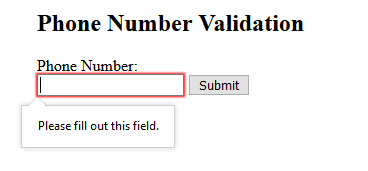






![Validate Phone Numbers with Javascript & HTML [2022] Validate Phone Numbers With Javascript & Html [2022]](https://global-uploads.webflow.com/5ebea55066f36f531dec5b32/61ccf25cd957db4482800f5f_wuGZI7oppsDYWk7OiGU6HZavcJS8tlVZLuUTHrHRLBeFI2-Szz6zFHZQuCNXPUDz1LKhzLnelxIG9AP8qpjzmn2YncJcyfIOHKrxX0gD8nmqJfQvonFvMvfrKSY517Qb9ka7vGSF.jpeg)
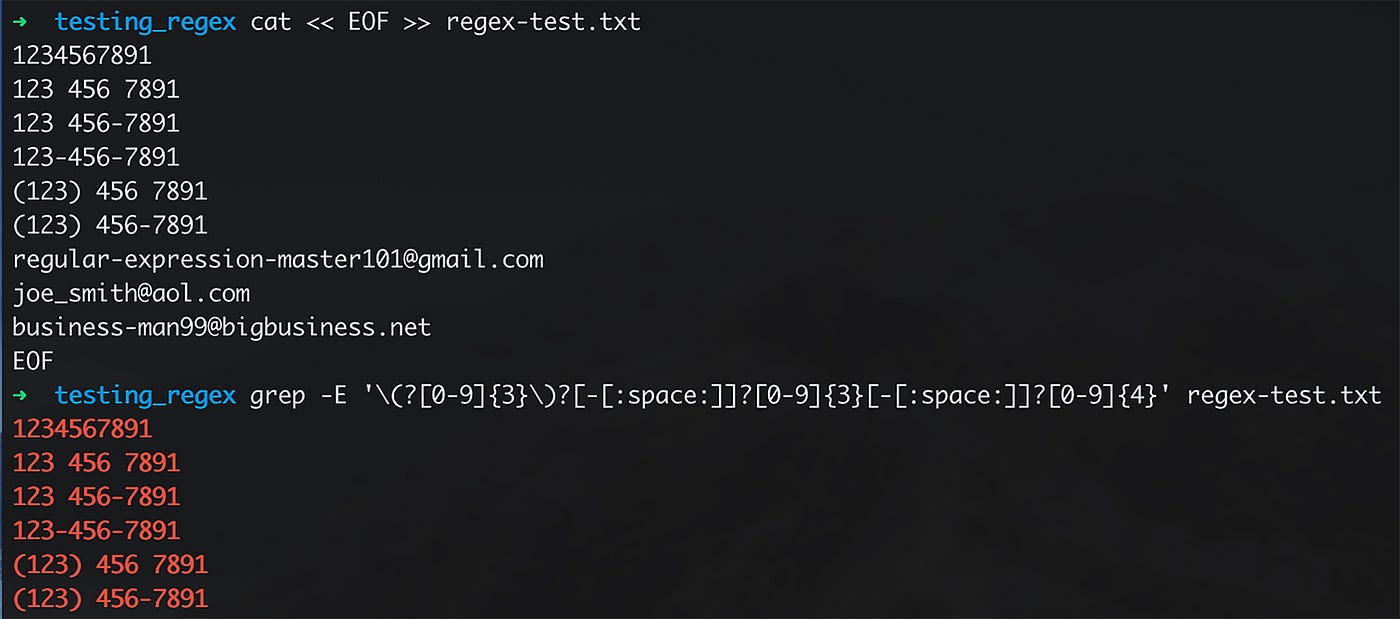






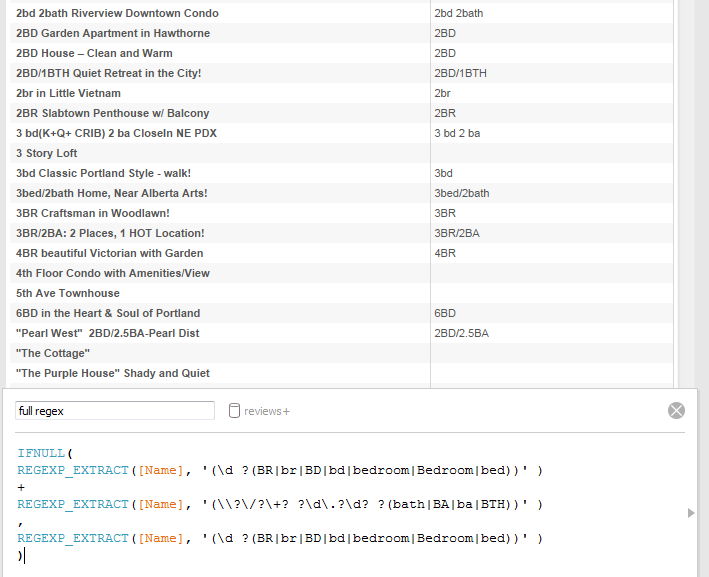





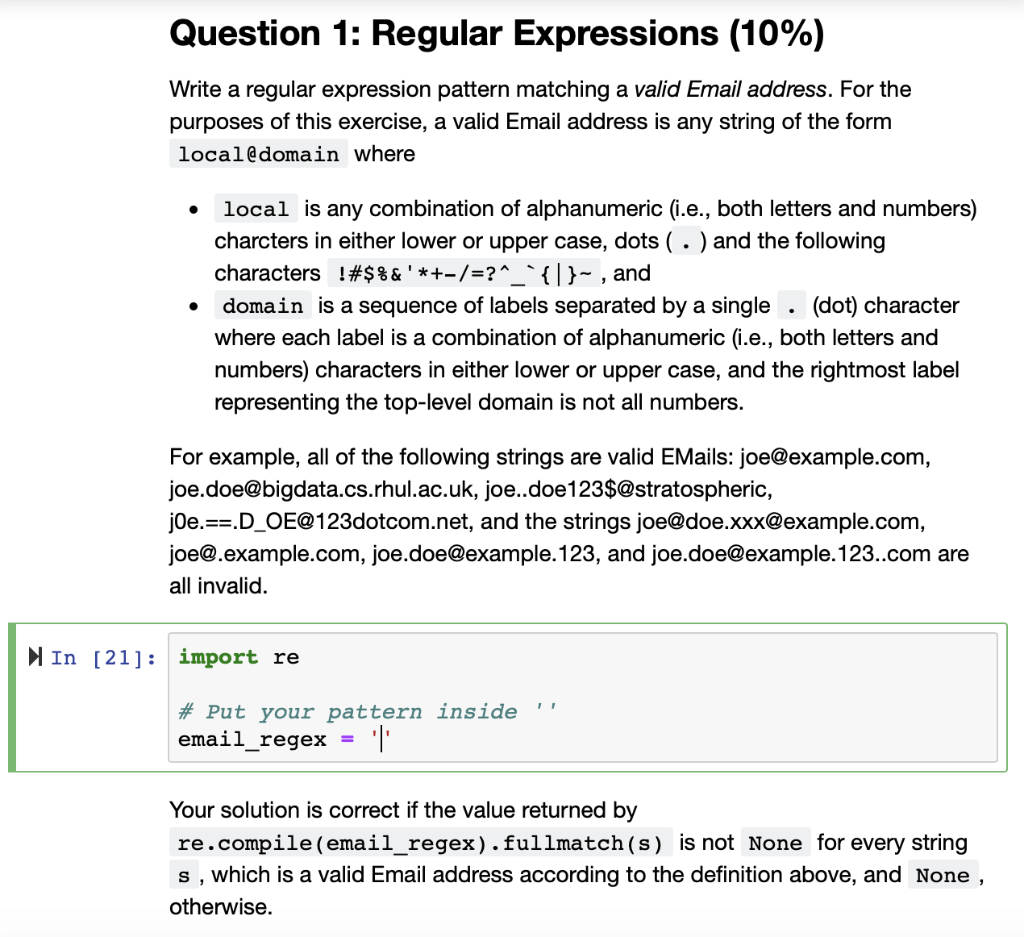
![Validate Phone Numbers with Javascript & HTML [2022] Validate Phone Numbers With Javascript & Html [2022]](https://global-uploads.webflow.com/5ebea55066f36f531dec5b32/61ccf25c5d1eb22e817d8366_D2yEjRbeBt4WgdTkxjqpeoq_95aOIEu4cNjTyZXpI4SHXHBi8yr6dkxTkyfKx8bp31K14QwFm7Rvke2Co--GPc73N7h4w-fQaOzgJxmpmOnR7skAhHB9FboCRpbQB0JN_CP3nzGT.jpeg)

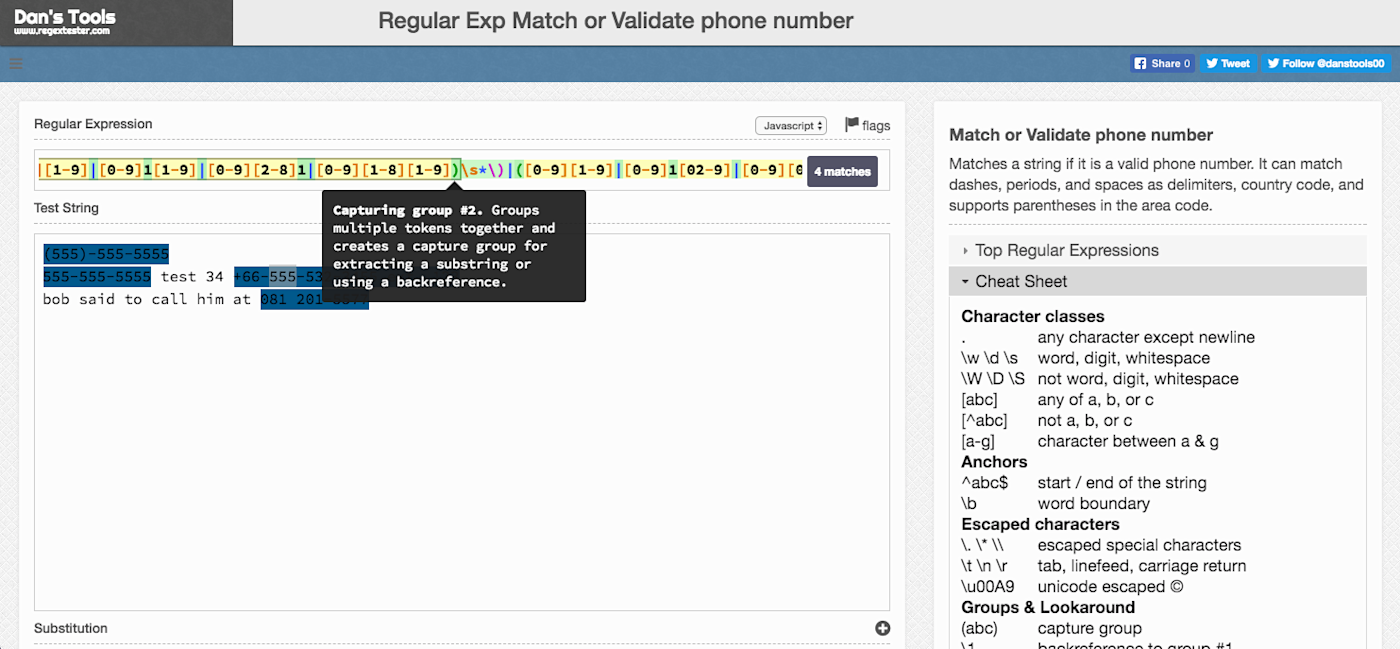


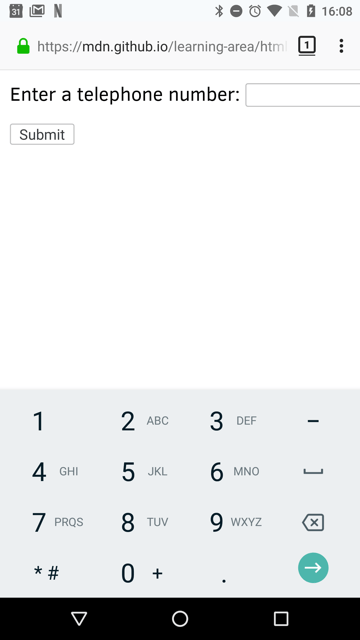 – Html: Hypertext Markup Language | Mdn” style=”width:100%” title=”input type=”tel”> – HTML: HyperText Markup Language | MDN”>
– Html: Hypertext Markup Language | Mdn” style=”width:100%” title=”input type=”tel”> – HTML: HyperText Markup Language | MDN”>

![Validate Phone Numbers with Javascript & HTML [2022] Validate Phone Numbers With Javascript & Html [2022]](https://global-uploads.webflow.com/5ebea55066f36f531dec5b32/61ccf25c4e697c21101c2e57_65DyuBnkpUlzKYtYMj1dquIp-ECvmbHnHqdwry4oDuHk05C8vf4oBY4yylVL-dU6dq0XGjnOC2a7I-YhTfuup7Bg9DSP2AWh2xvnfl8BKNftwVmakr31c5CYmRSxrOr7R20CRLmm.jpeg)
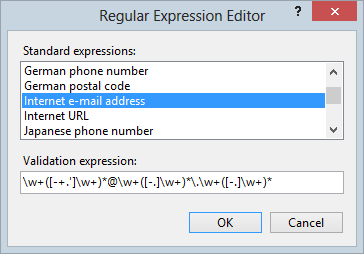




Article link: regex uk phone number.
Learn more about the topic regex uk phone number.
- Regular expression for GB based and only numeric phone …
- Telephone numbers – GOV.UK Design System
- Validate Phone Numbers ( with Country Code extension) using …
- RegEx match exactly 4 digits – Stack Overflow
- Validate Phone Numbers with Javascript & HTML – Abstract API
- UK Mobile Numbers – Regex Tester/Debugger
- How to write a regular expression for UK phone numbers
- Is UK Mobile Number – ETL Software
- Regex for phone number – iHateRegex
- 4.3. Validate International Phone Numbers – O’Reilly
See more: https://nhanvietluanvan.com/luat-hoc